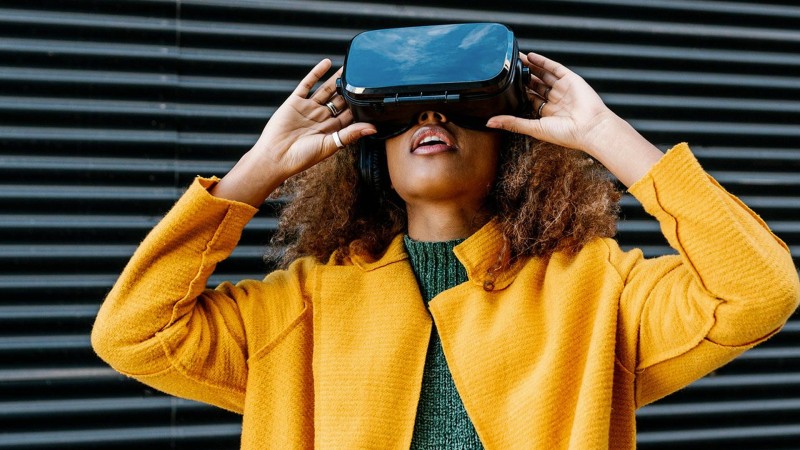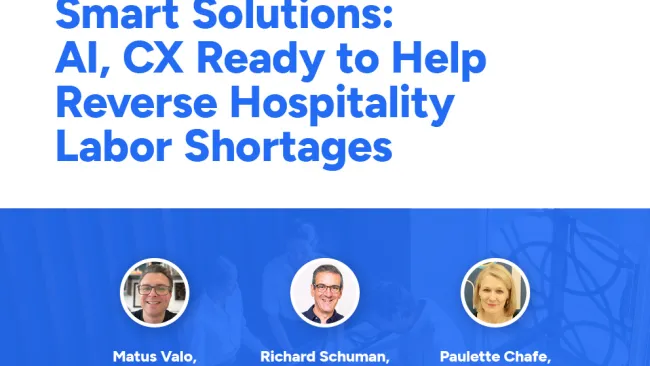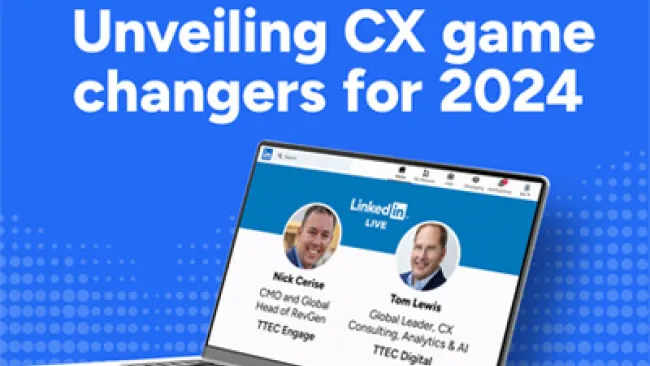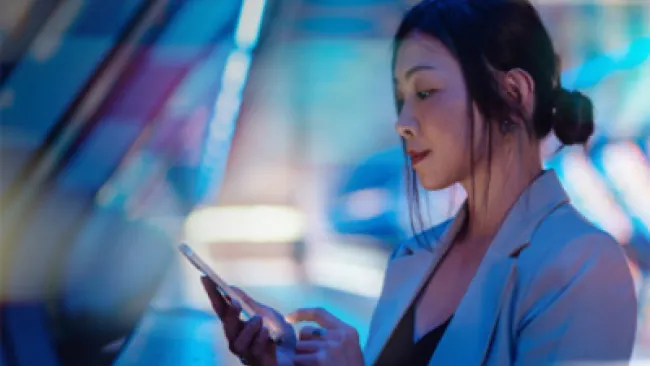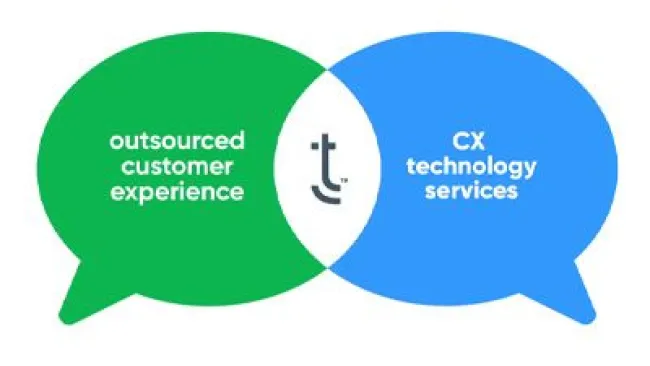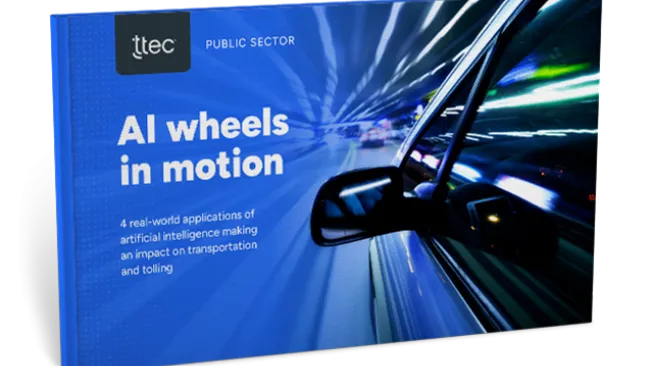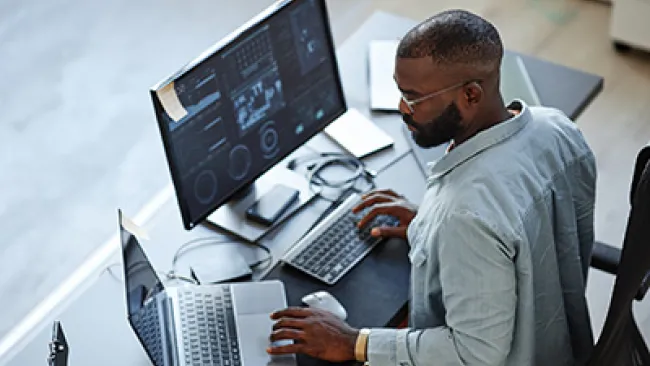TTEC writers Liz Glagowski and Dylan Haviland got together to chat about nearly a decade of virtual reality (VR) and augmented reality (AR) experiences. They looked at past predictions, the future of technology, and what the Metaverse will bring to the table.
Transcript:
LG: Hi, and welcome to the CX POD. I'm Liz Glagowski, the editor in chief of the Customer Strategist Journal. And today I'm here with Dylan Haviland, our senior producer. Hey there, Dylan.
DH: Hey Liz.
LG: So Dylan, I wanted to get together with you. I thought it was a great idea to kind of explore a topic that you've been covering. You recently wrote an article for the TTEC blog, that looks back at virtual reality, augmented reality, and the advancement of these technologies into what may end up being the Metaverse. And it was a great article because it looked back on some of the coverage we've done over the past couple years and then looked at where we got some stuff right and where we got some stuff wrong and our subjects did as well. So I thought that was a really cool way to just kind of reflect on where, how far we've come so far. So do you want to maybe just give a couple key highlights of that, and then I thought we could just kind of dive into some ideas around this AR, VR Metaverse kind of world.
DH: Looking back at our older content, we first started covering VR and AR technology, that's augmented reality, around 2016. Now, just before that, actually, when I was in journalism school, we were experimenting New York Times VR app, which was really my first segue way into virtual reality technology. Around then, it was just these cardboard goggles, you put your phone in front of it. And we were really witnessing the start of something we could have never even thought would happen. I mean, you look at Oculus now and the Metaverse, we really gone such a long way in seven years. And really what we first started seeing was this cool report we did on eBay Australia and Meyer. That's a really big retail chain in Australia, and they set up a virtual storefront and your eyes would navigate over the products and information would popup as you went over it.
And this really almost for told the future of VR, because it was really then when it started moving past gaming and entertainment and it's something more tangible for businesses opportunities to turn customer experiences into sales. I think one of the biggest takeaways we've seen is that it can be an incredibly effective tool for a personalization. We've seen that with Nike, Warby Parker, Wayfair really using VR and AR as a chance to take what sometimes can't be in store experiences. I mean, just look at COVID, nurturing opportunities to turn digital experiences into real life and applicable sales opportunities, whether it can be like Warby Parker where you can virtually try out on their glasses. Or as I mentioned Wayfair where you can digitally place furniture in your own home, I mean they're creating new experiences. Well, and I think that's super interesting to see come to life.
LG: Yeah, those are some great examples. I think when we first started covering this, you mentioned the New York Times VR app, and you could kind of get a 3D picture of somewhere that somebody was. Now that's kind of been replicated almost like those 3D photos you can take with your phone and things that go up on Facebook where you can do a 360 degree view of things. So those things are starting to become almost normal, which is pretty exciting. And I think then to your point, a lot of these uses of virtual reality and augmented reality in these practical ways kind of take it out of the science fiction realm and into the everyday business, which is where we like to sit. So you mentioned, beside the Warby Parker and Wayfair examples, I know that especially with COVID, you can do a virtual walkthrough of a house.
If you want to go look for a house somewhere where you're not, there's a lot of tech support applications that are being used with virtual reality where a support person can actually almost be at the point at a broken pipe or in a situation where they can look at a diagnostic of a car and try to actually simulate fixing it themselves. There's a lot of applications we're seeing around employee training and learning and getting better in these maybe even high stress situations around fire prevention, EMT support, all these things that the more virtual reality training and simulations you can do the better. And even to places like healthcare, where I saw, I just read a new one about augmented reality. You can overlay a photo over someone's hand to see where the best spot to tap their vein would be.
DH: Wow.
LG: And different things like that. So it's starting to become more pervasive across a lot of different industries, not just entertainment. And it's nice to see what we talked about a few years ago as this may one day do this is kind of more like a natural everyday sort of thing.
DH: Exactly.
LG: That's great.
DH: Yeah. And we're seeing also where, I mean, we were talking about this earlier, the theme of building an emotional connection with the customer and all these investments and trying to make VR and AR more personal and more human really have paid off in COVID because now, I mean, people are seeking this technology that as almost a necessity connect with brands and other people, I mean, seeing it come to life in the Metaverse right now, I know that is helping.
LG: You know what's a really interesting point about that, when VR and AR first started coming on the scene, obviously pre pandemic people were using it as an escape from reality escape from the real world and other people. But then since the pandemic started and we realized how terrible it was to not be around other people, I think people, companies and brands and innovators are using these tools to try to make those connections virtually when you're unable to not because you don't want to be there it's that you can't be there and try to bring that person to more closer together, even though it's in a virtual world. So that's not kind of flipping the idea of VR, AR on its head from where it started those few years ago.
DH: Well, that would be a really interesting thing to see develop over time, even with our own reporting. I mean we haven't seen the full implication yet of VR when it's reached the extent of maybe what the Metaverse is promising. What I think would be very interesting to see is maybe on more of a negative aspect is how much personalization users can have before maybe they've come uncomfortable or they can take. We still have to see how things like the Metaverse are going to shape up. And if it's going to be maybe more of a pure social tool which mean, how heavy marketing and advertisement might play into it. So I think as everything becomes more mainstream, I'm very interested to see how public sentiment changes, as VR moves from just being this more of a wow factor into an everyday tool.
LG: Yeah and I'll be interested to see how that goes with different age segments and different people's comfort level with this technology. I mean, now it seems to be more targeted toward the Fortnite crowd and toward people who are Roblox sort of things. And as those younger people start to... They're already used to it in certain ways for gaming or whatever, see how it applies into their lives in different ways for eCommerce, for healthcare, for all these different ways and how that might apply.
We'll be right back.
Ad: Looking to create an exceptional customer experience, check out ttec.com/happycustomers. There you'll find great tips, strategies, and tools to make every customer interaction, shine. That's ttec.com/happycustomers. Now, back to the interview.
LG: Back to the Metaverse, that's a buzzword that's everywhere, and I think companies want to pay attention to what that's going to be, but they're not quite sure what it is yet.
DH: Mm-hmm (affirmative).
LG: Even at this years South by South West was just happened last week. Mark Zuckerberg had a big keynote all about talking about the Metaverse and how they're really doubling down at Facebook now called Meta about trying to what he said, make it feel like you're present with other people or in another place. So it's not trying to escape. It's trying to really build those connections. And again, we'll see how that'll actually all come to fruition. I think a big key will be trying to keep things not only entertaining, but frictionless and appealing and a better experience than what somebody might be able to get in another channel right now.
Ultimately what it comes down to when you want to create a better customer experience, it's an experience that you can't get in other places that this solves for. So right now it's like you said, a wow factor. It's this cool new thing to try, but until it makes it easier than walking into a store to buy something. If going into the Metaverse to go buy something or connect with customer service in a virtual chat room versus picking up the phone or messaging them or something, that's when the adoption will grow. And I think people are still chasing the shiny object of what is the Metaverse right now. So I think it'll be a little while before we get to that, this is going to be our mainstream adopted sort of channel, I think.
DH: I completely agree. And when we write on AI and chat bots, we see the same problem. You don't want to just have technology for technology sake, if you're just going to throw in VR. I mean, it has to provide a unique and easy experience, you can't make it difficult. One thing that comes to mind is with Microsoft in the early days, when they were doing the Xbox Kinect, a lot of the games were automatically integrated with using motion control and it was just awkward and it wasn't always the best option, but it was kind of forced on you in certain ways. And we don't want to repeat the same mistakes with VR.
LG: Yeah and that's why I think it was important for you to write the article that we're referring to on the TTEC blog is that we kind of looked at back at what we were talking about five, six years ago around VR and AR and making sure that it was actually solving the customer need. Now that we're here at six years later, that we're starting to learn some of those lessons and then can apply it as we enhance the VR and AR just use in the marketplace.
DH: Exactly. I mean, VR is not going anywhere. I mean, just from research the virtual and augmented reality market is expected to grow by 600 billion by 2025. It's just what we do with the tools we have and making it more human and easy to use.
LG: Yeah. That's a great point. I think we're talking a lot about AR sorry, VR because of the Metaverse and that's kind of top of mind, but the augmented reality, I think is the spot that will see the most growth in the short term. I think already from when we've talked about it six years ago to now. We're seeing these augmented reality use cases rather than the more advanced virtual reality where you're actually mixing real life with some of these really cool tools, data insights, and then melding them together to make a better experience. So I wouldn't count AR out. And I think that's where we'll see some of the most recent gains.
DH: And when I mentioned those two use cases before Wayfair and Warby Parker, those are both examples of augmented reality and what I've seen with tools like that. They're definitely the most applicable and actually like useful for everyday life. What we still see with VR, it's sometimes more, just a cool to have, and more of a fun thing, but I've certainly seen with AR it's actually can be very applicable and tangible for everyday brand experiences.
LG: Yeah and I think what we learned from you going back and reviewing some of this ways we've covered this is that we've probably should stay out of the prediction game, not us, but even just reporting the predictions can always get turned sideways, especially when things like pandemics happen. So it'll be interesting to see how, when we go review this and in the future, how much we might be right. And how much we might be wrong. So I look forward to reviewing this one in the future to.
DH: Absolutely. And if anyone's interested, the blog's name is The Metaverse and Digital Seekers: Looking at six years of VR and AR experiences.
LG: Excellent. Well, Dylan, great work and great discussion today. And for those of you interested check out the TTEC blog to find that and other great articles about customer experience.
DH: Great. Thanks for having me.
